5 Tools to Detect AI-Generated Content
We are exploring many topics on how we can use GPT-3 more efficiently in our SEO efforts. In this article, I wanted to list some tools on how to detect content created with GPT-3 (since GPT-3 is available in the market at the time of writing this article).
Before going into details, even the rumor of 100 trillion parameters in the image below increases my excitement before GPT-4: (Image source)
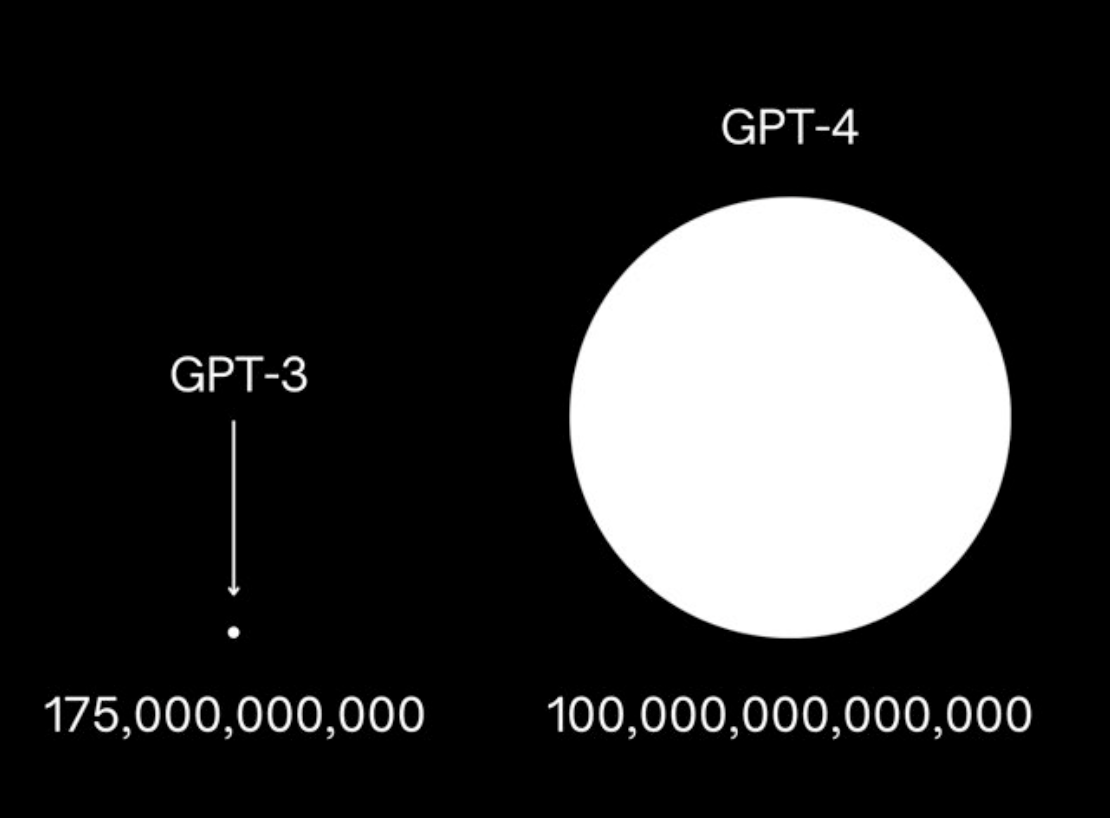
Let me also summarize some of the highlights of the papers generated by GPT-3:
- Understanding human behavior: While AI can quickly generate large amounts of content in seconds, it often lacks emotional connection in some cases. So it can be a challenge to create the tone of content you want.
- Cutting-edge ideas: AI generates content based on previously collected data. Therefore, it may not be able to fully convey the newest ideas to you. It works with the data it collects from the internet and the information provided to it.
It is important to remember that there is always a margin of error when testing the tools in the article, so it would not be a correct choice to completely trust the tool's results. The tools can provide you with many different effects in different languages. All tests were conducted in English.
You can find AI content detection tools in the list below. When selecting the sites, I have not included all the sites I have seen, but the ones that I think are useful.
1. Content at Scale
Test page: https://contentatscale.ai/ai-content-detector/
Free use is provided for up to 2500 characters. Content larger than 25 words will give better results. The tool shows that the result of content created by Chat GPT-3 is fake:
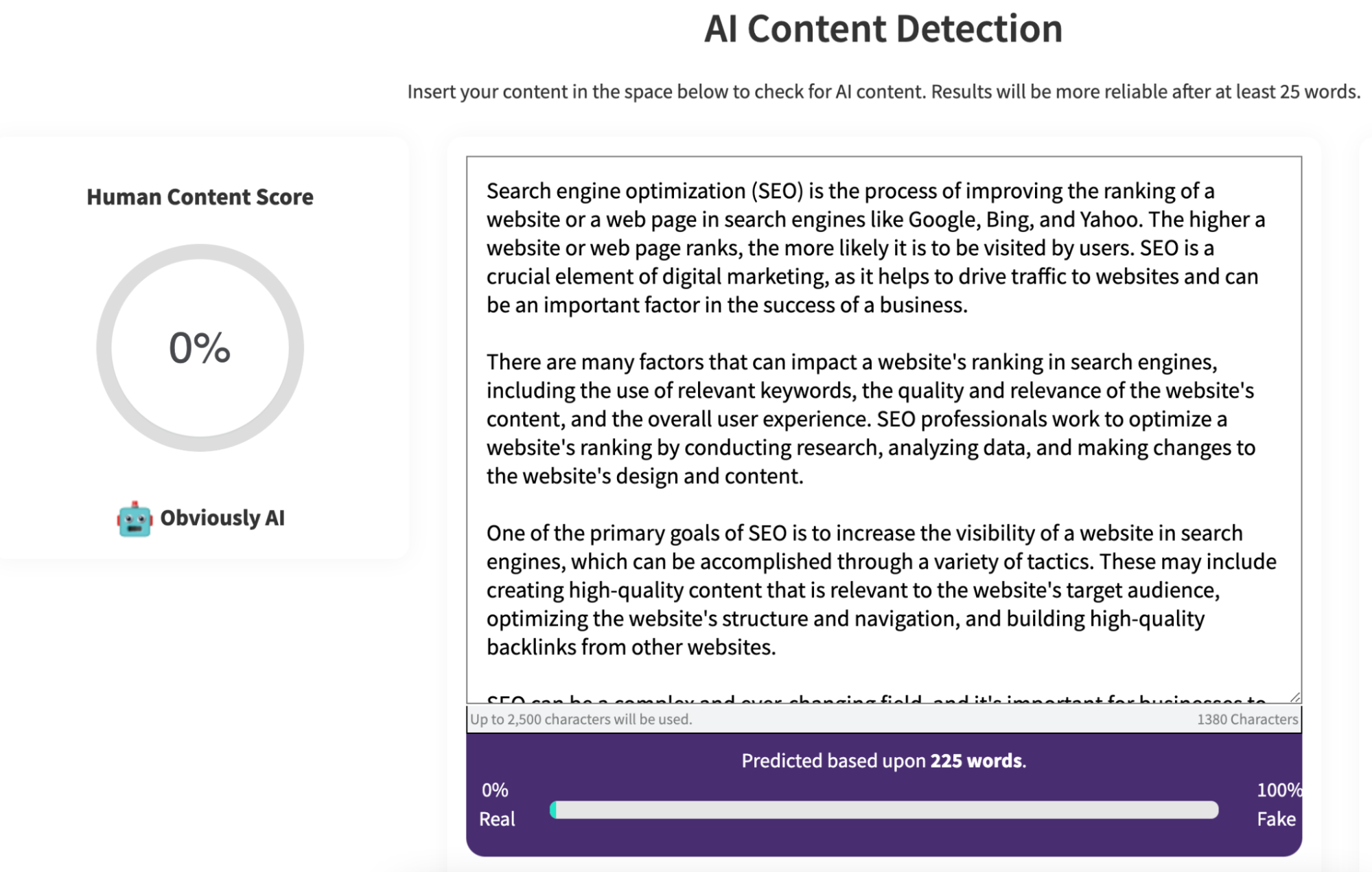
When I check an original post, you can see the result below, it shows it as a human-written post:
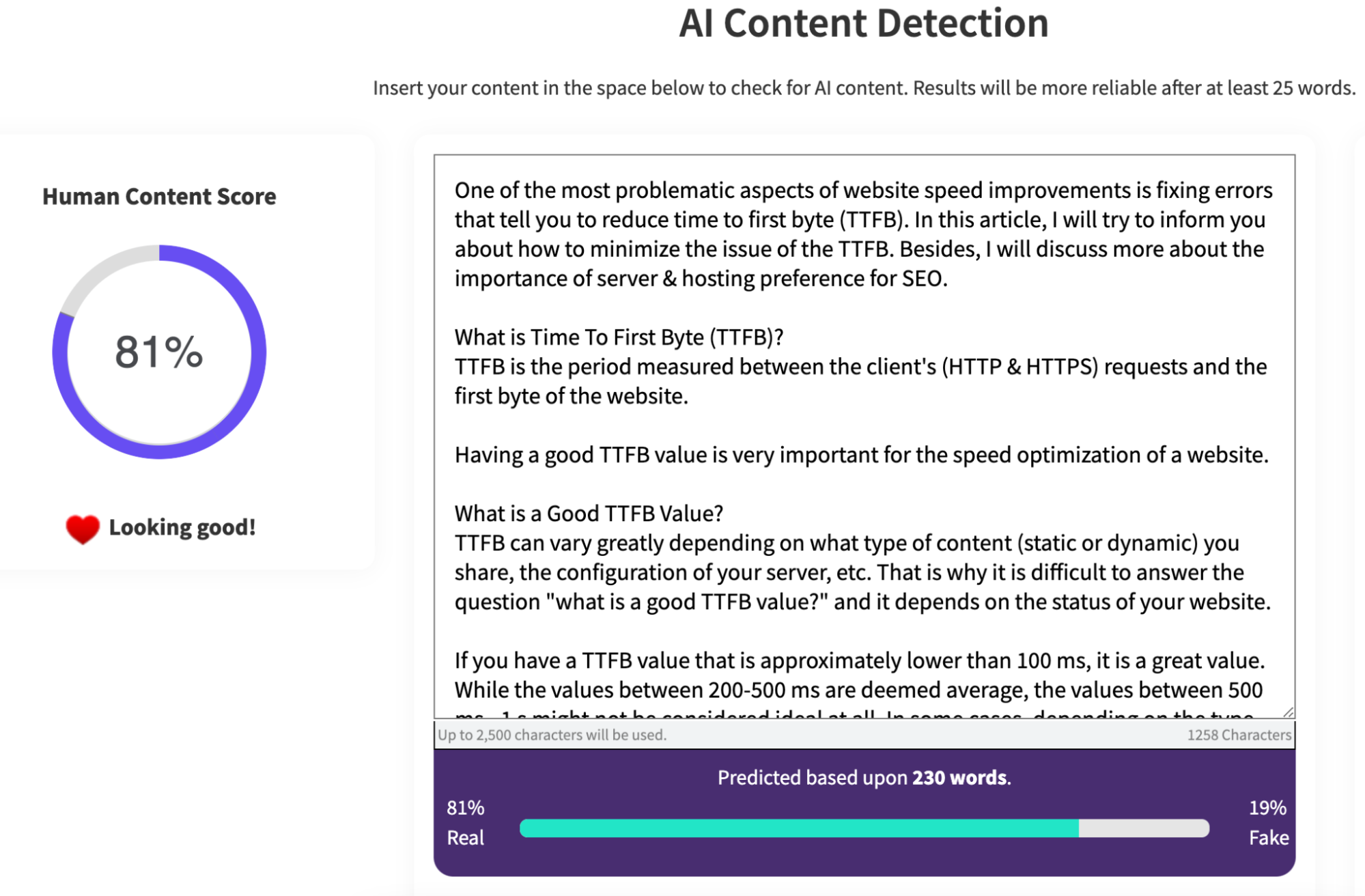
2. Writer.com
Test page: https://writer.com/ai-content-detector/
Another tool that you can test for free. When I import a human-written text into the tool, it clearly shows that it was written by a human, as shown below:
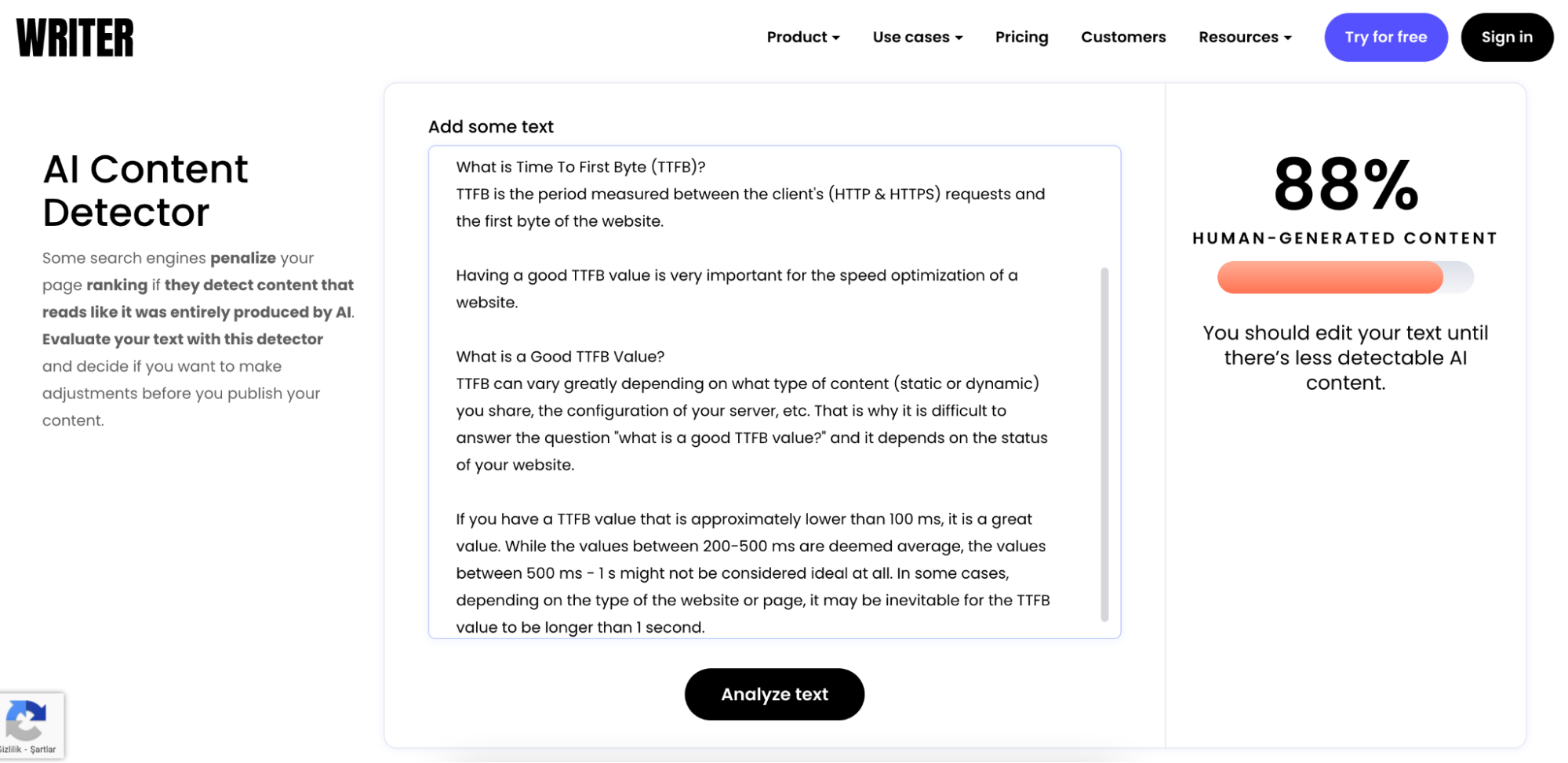
A piece of content written by GPT-3 scored 17%. It's worth noting that a few more tests showed much higher scores for AI-generated content that I didn't intervene with:
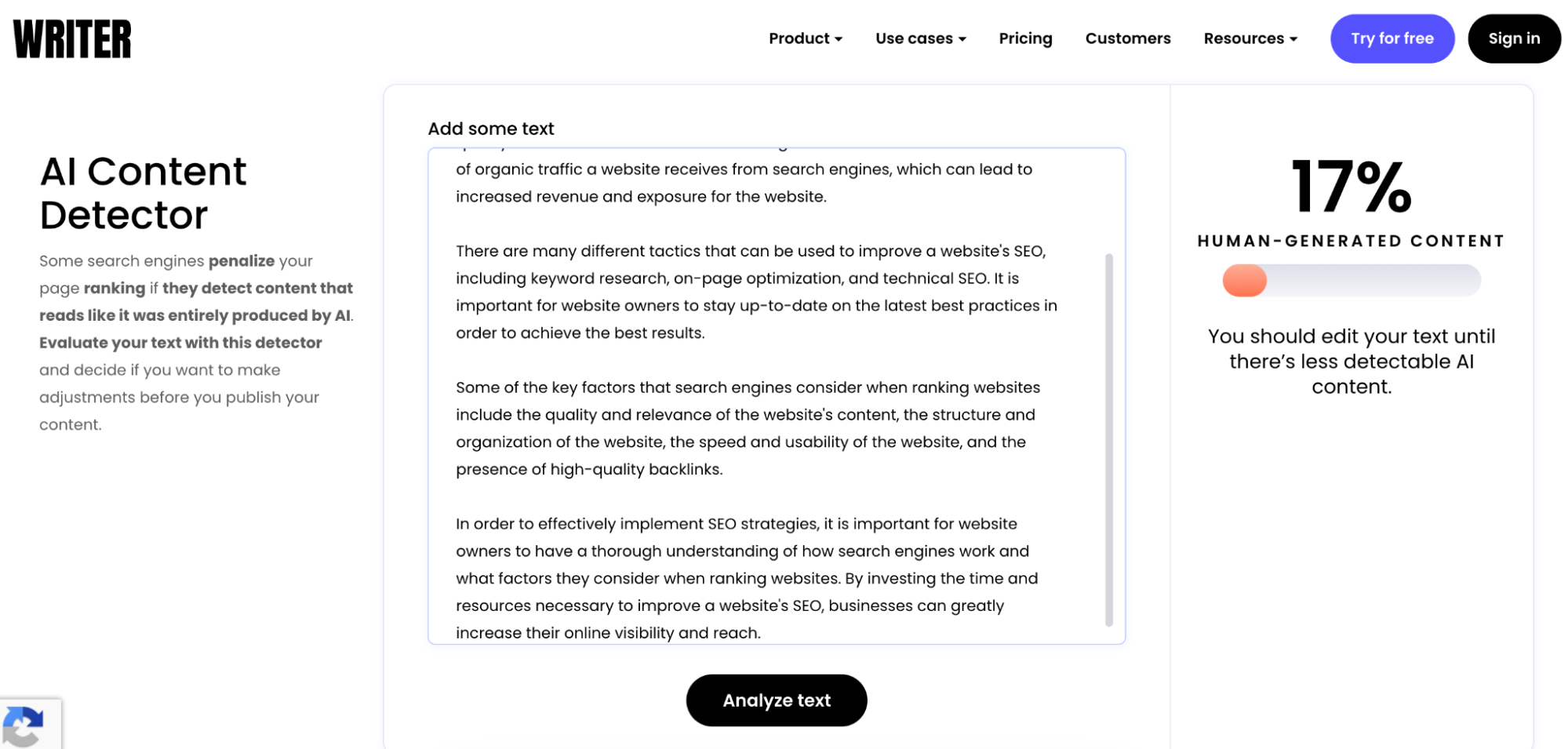
3. GPT-2 Output Detector Demo
Test page: https://openai-openai-detector.hf.space/
As stated in the page content, it is a calculation tool that gives more reliable results after 50 tokens. It can clearly show that the content produced by GPT-3 is 99% fake:
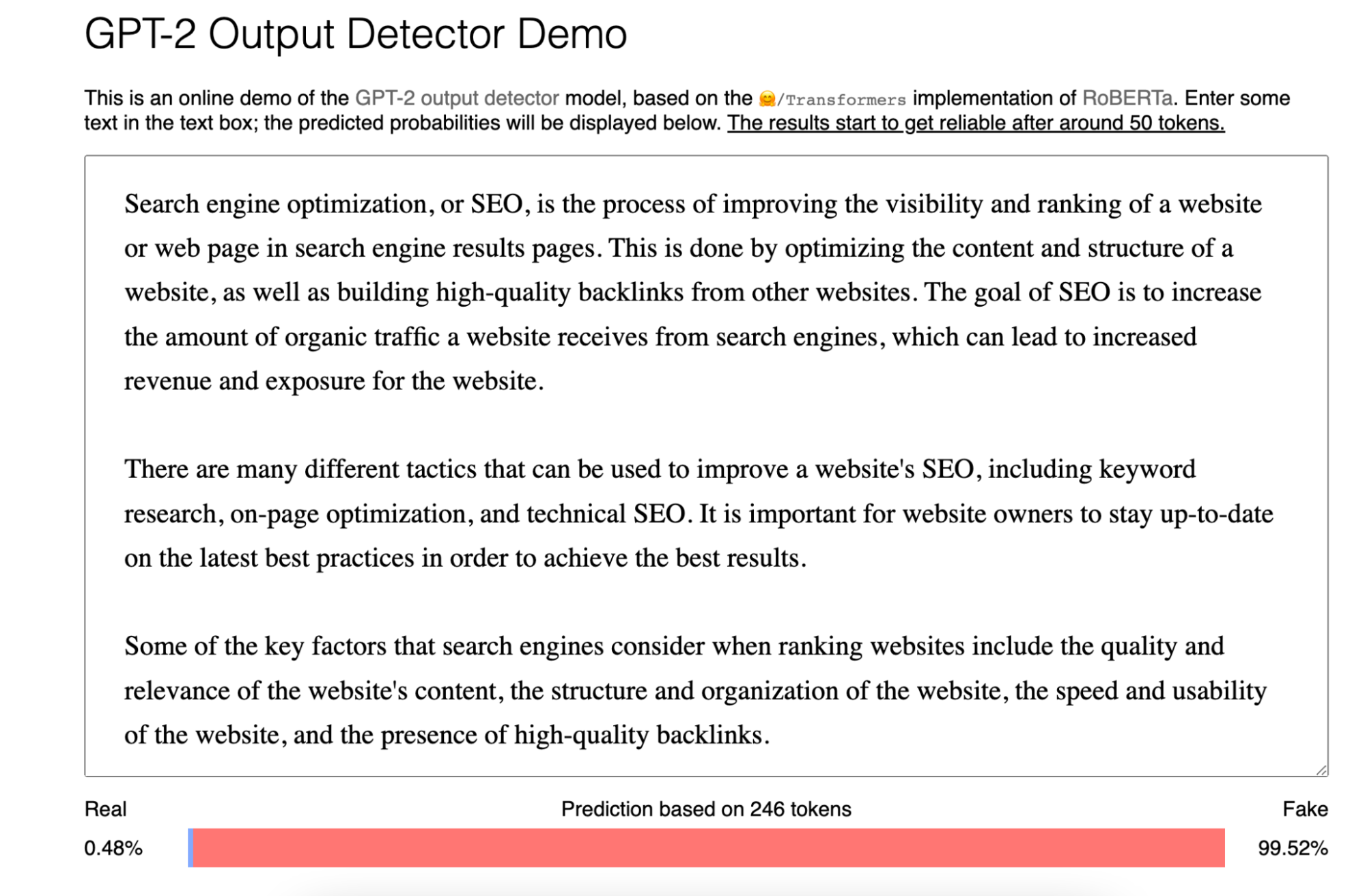
When I test human-written content, it shows that 73% of the content is real:
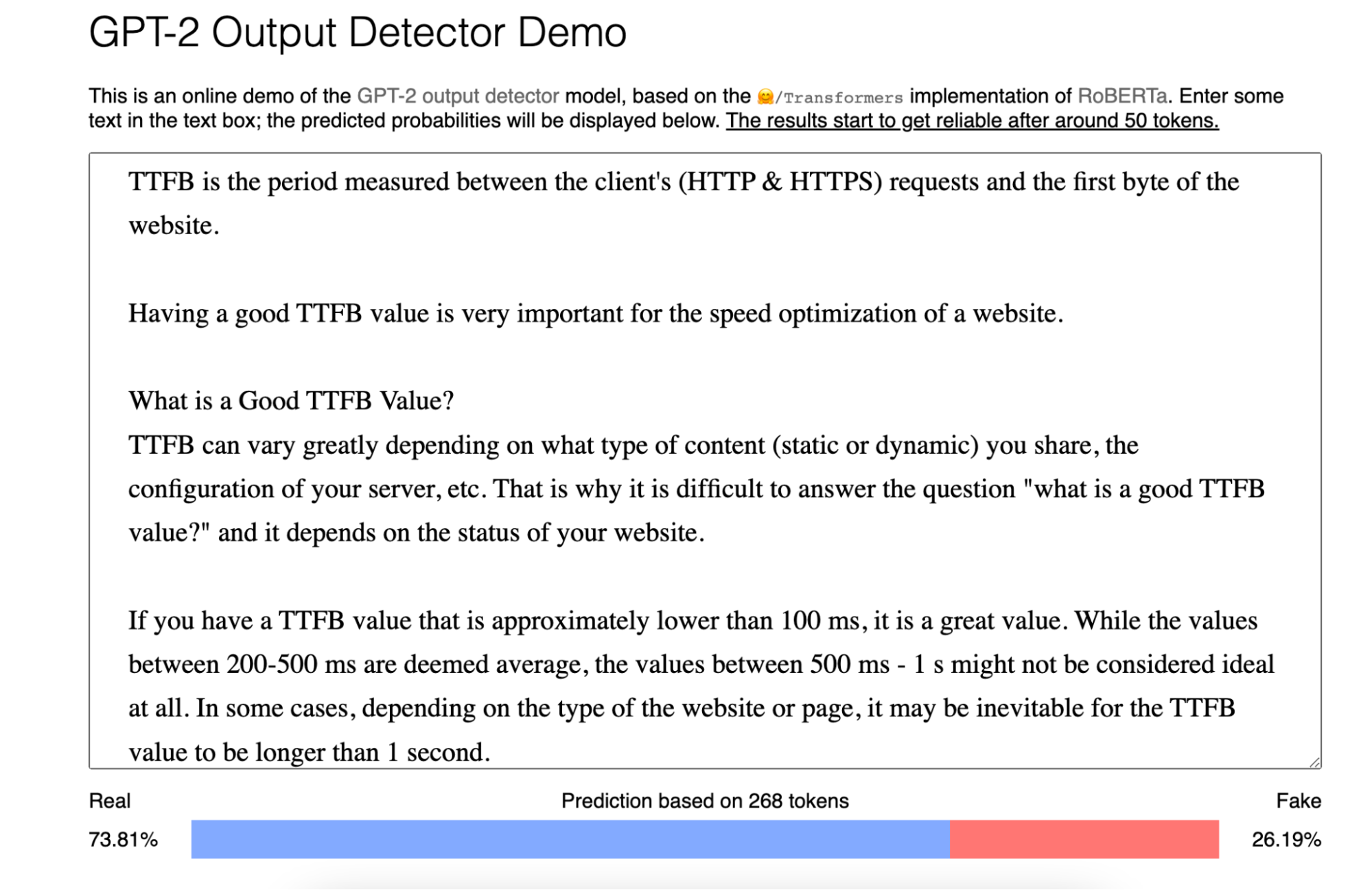
4. gpt-detector.com
Test page: https://www.gpt-detector.com/
This tool, like its counterparts, can check at a very basic level whether the content is written by AI or not. Below you can see the result of the AI content:
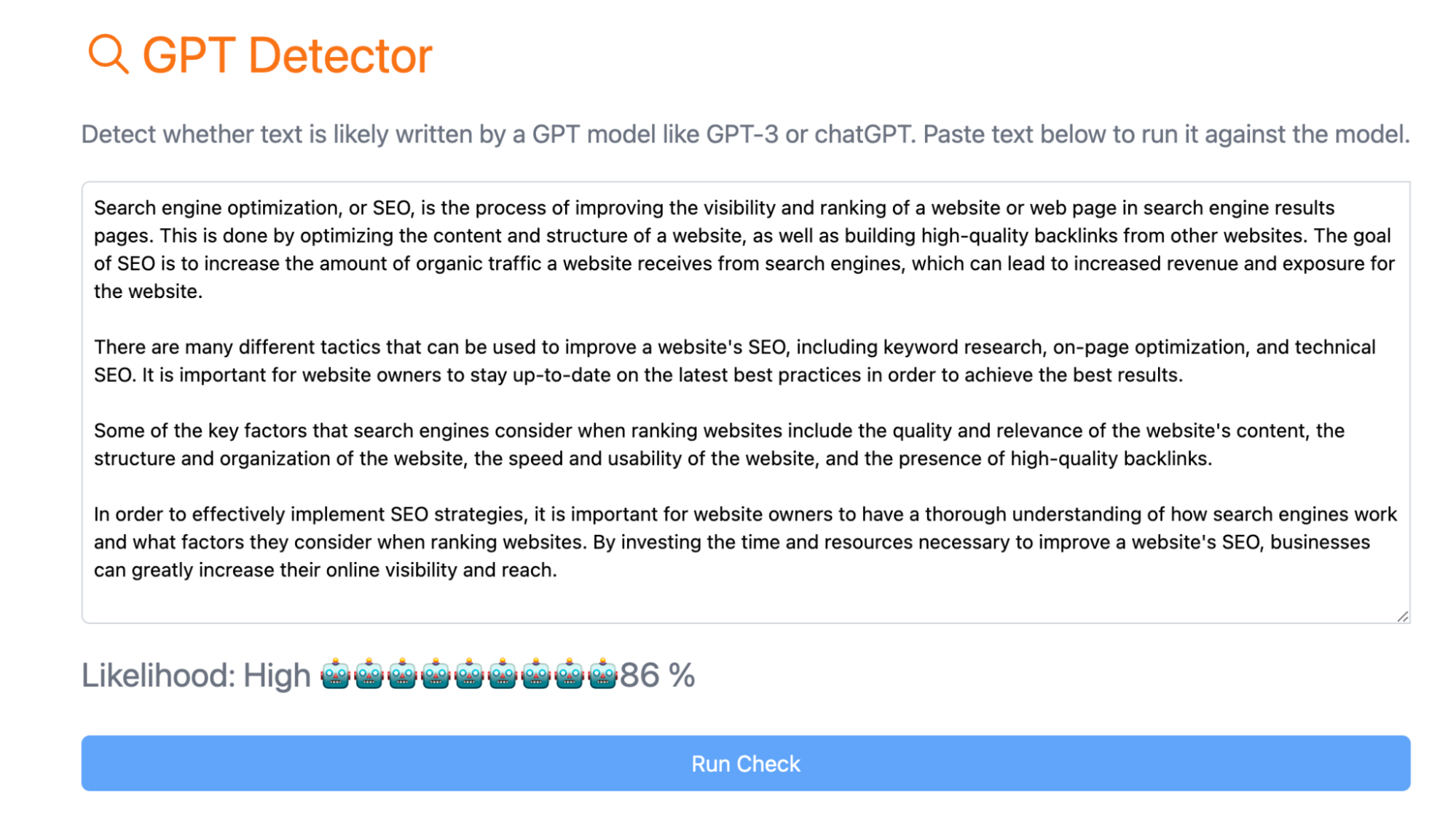
The result for human-generated content indicates a low probability, meaning that the content was written by a human:
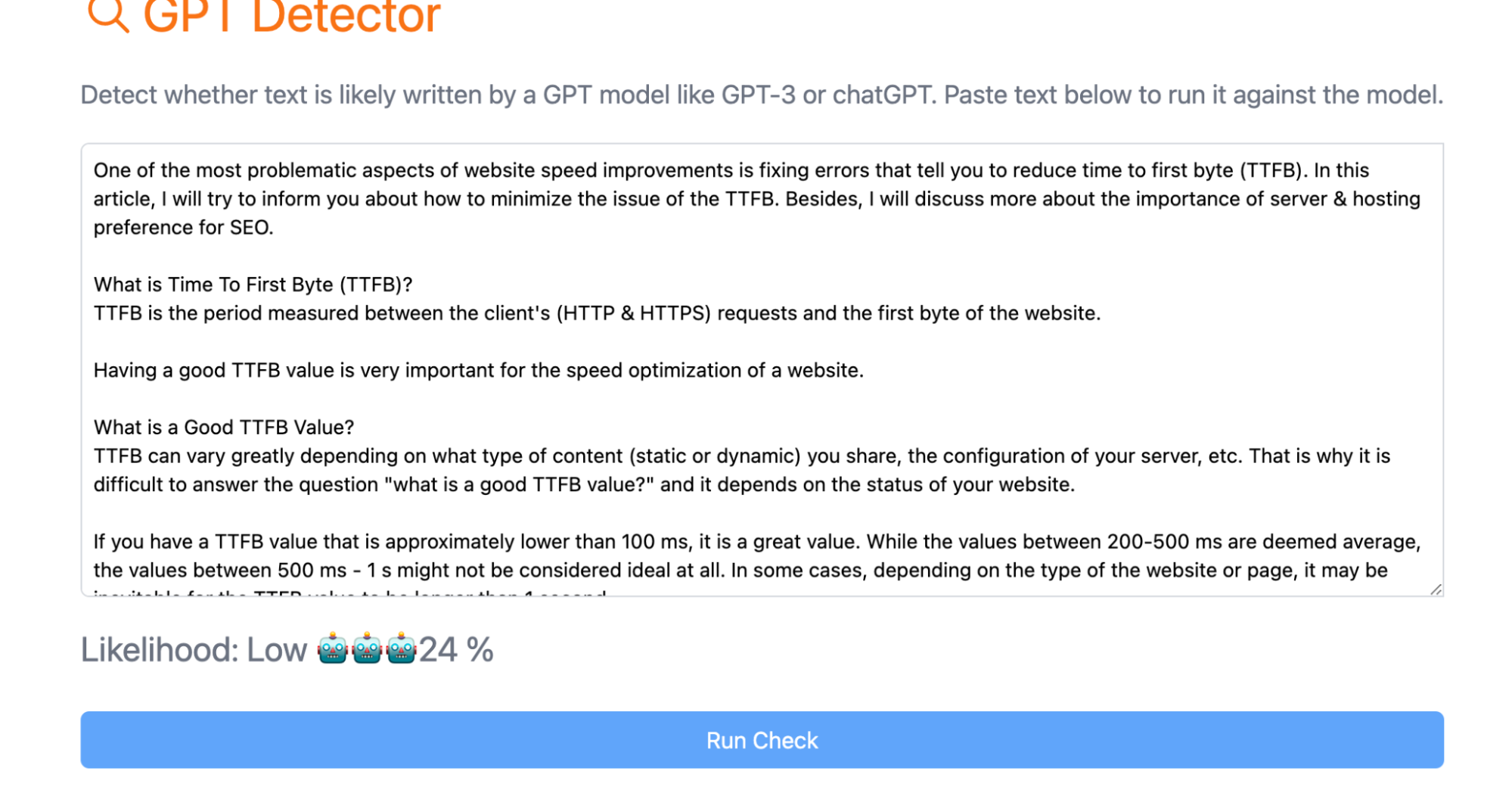
5. Gltr.io
Test page :http://demo.gltr.io/client/index.html
Gltr.io uses the GPT-2 117M language model. In particular, the purple and red colors in the output indicate that an article was written by a human. In the case of being skewed to the right in the histogram results, you can already see very clearly whether this article was written by a human or not. Below you can see the result of a piece of content called What is SEO written by AI. There are a lot of green and yellow colors:
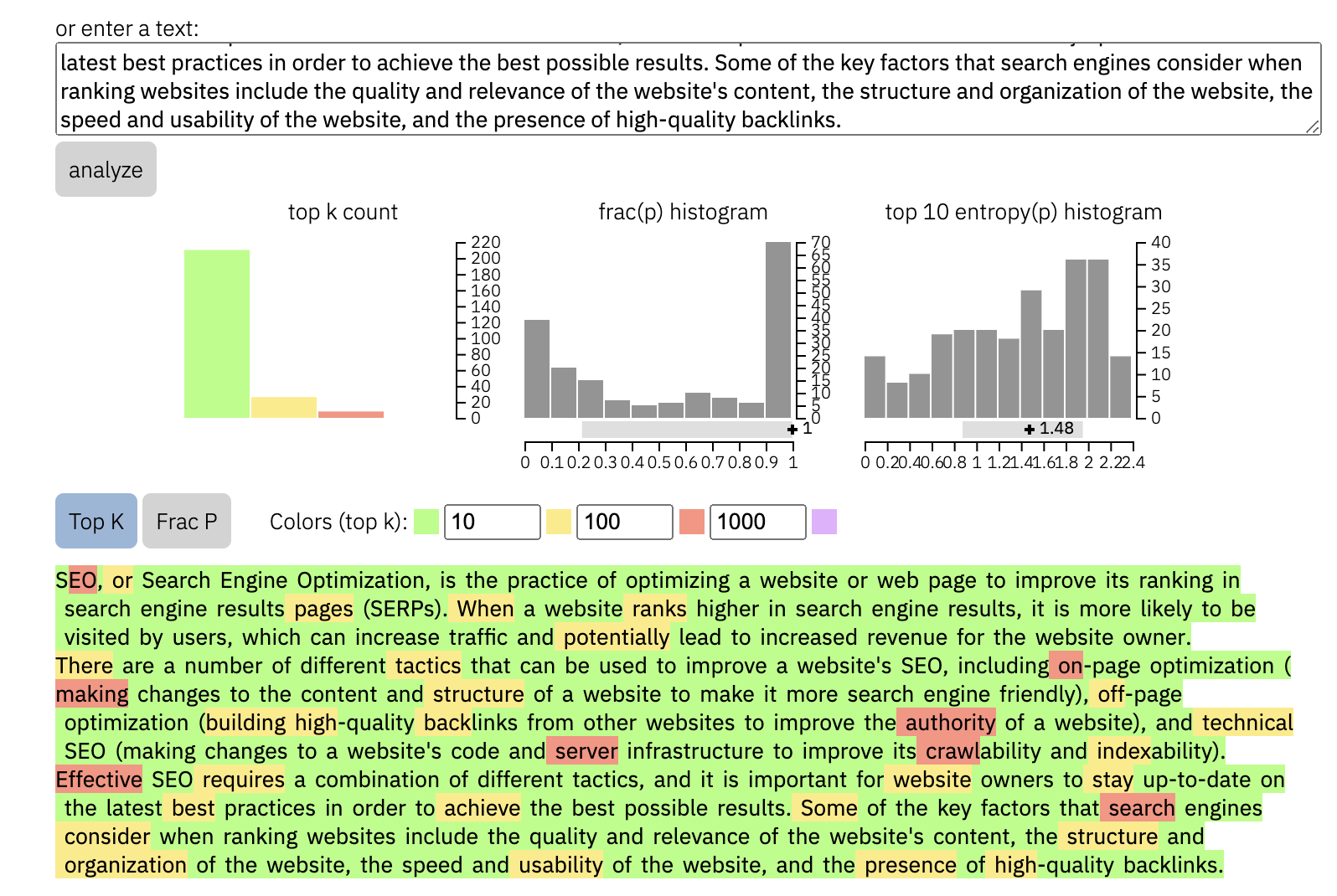
When we examine human writing, the model shows that purple and red colors are much more common:
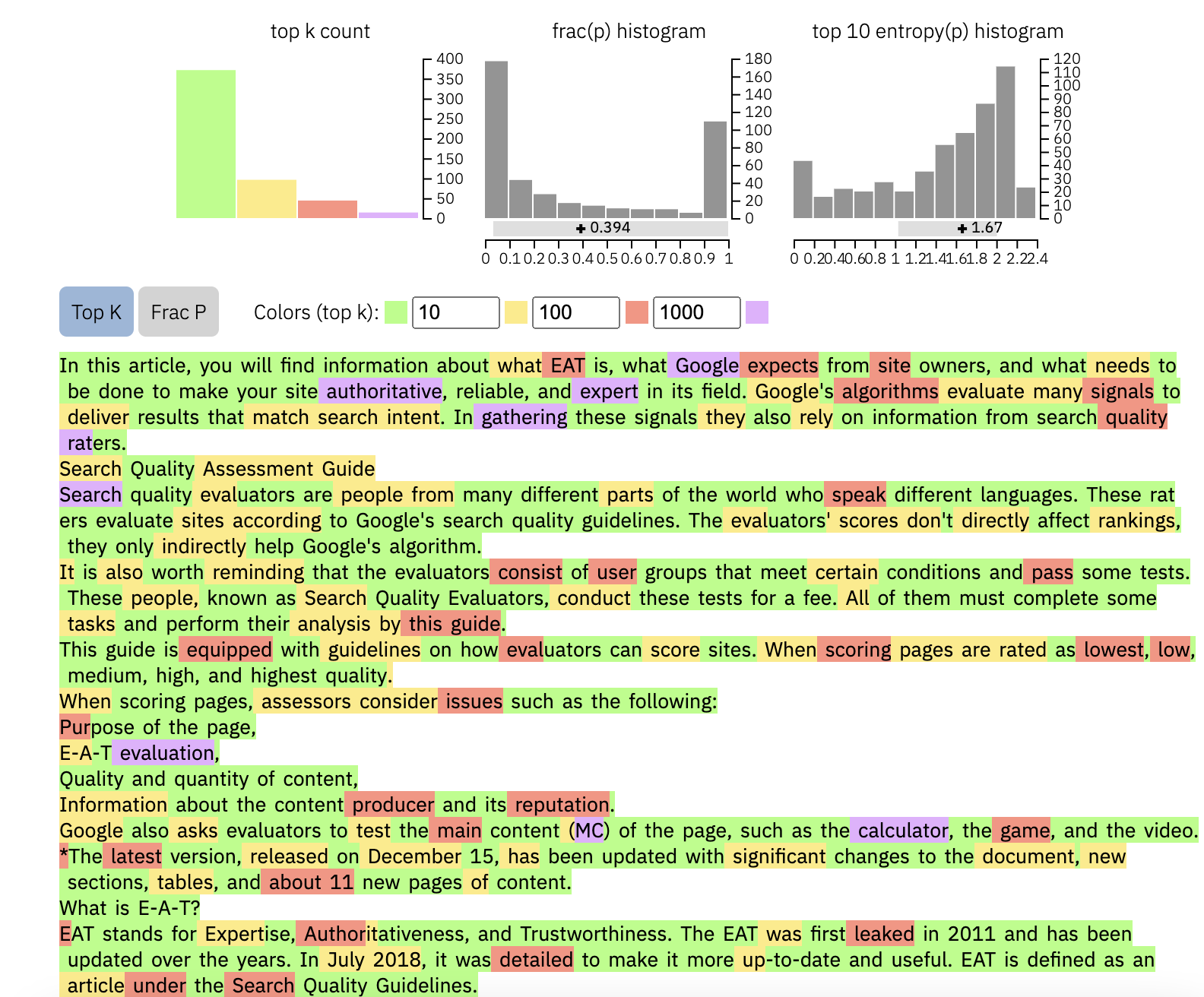
You can use the tools not only for your content but also for analyzing your competitors' content. Perhaps your competitors are autonomous or semi-autonomous in certain parts of their sites. As you can see in the case of the Washington Post, they use artificial intelligence to create content:

With these tools, you can identify how your competitors create their FAQs. You can even track the performance of your competitors' relevant pages according to these results and create action plans:
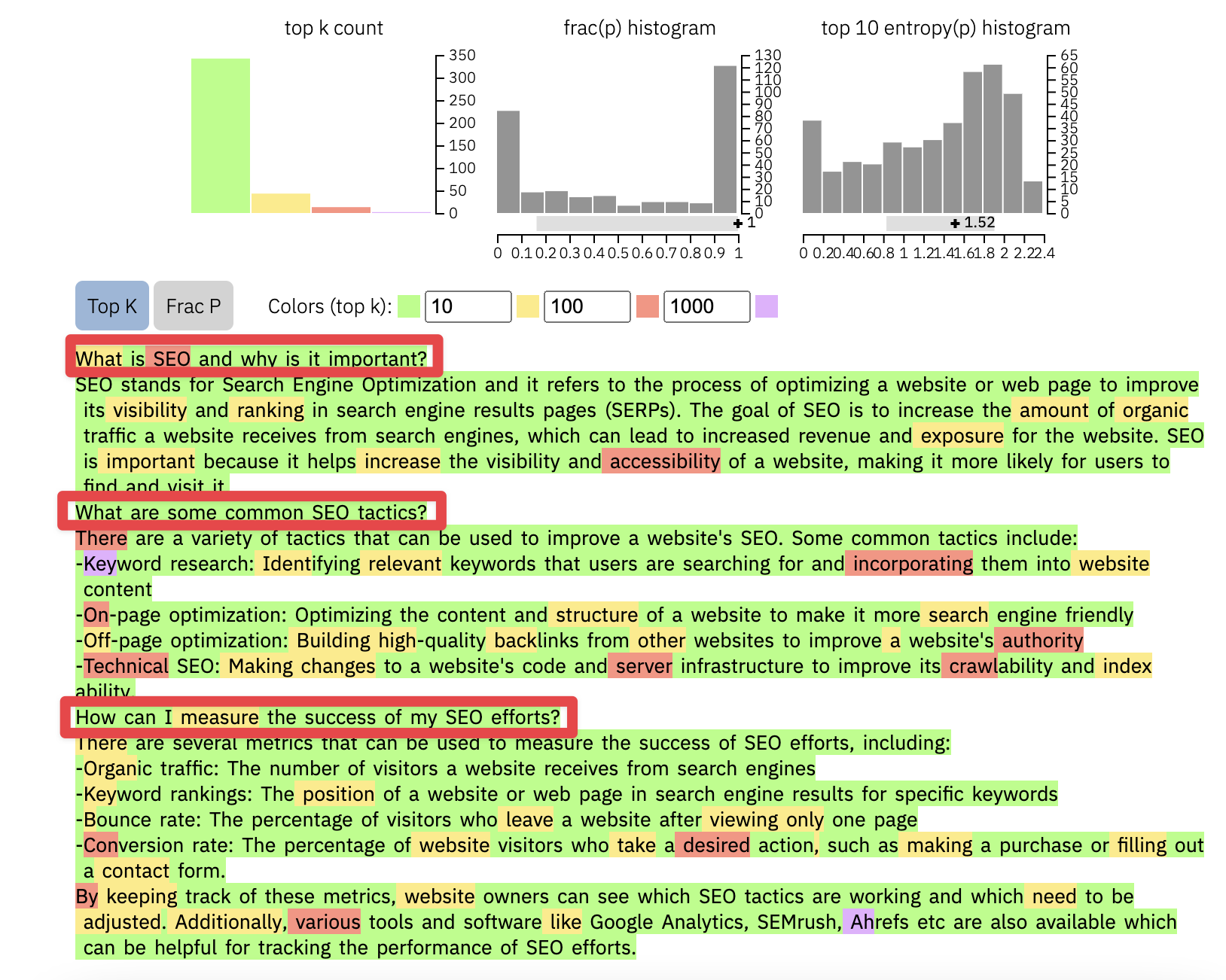
Will Google Devalue AI-Generated Content or Take Manual Action?
Google's John Mueller said that content automatically generated by AI is considered spam according to webmaster guidelines. So it can reduce the quality of these sites as well as penalize them.
The Web Spam team can even take manual action against the sites concerned. Automatically generated content was already considered a violation of the guidelines before. It's important to note that Google has LLMs bigger than GPT3, such as PalM, and you can see an example of this below:
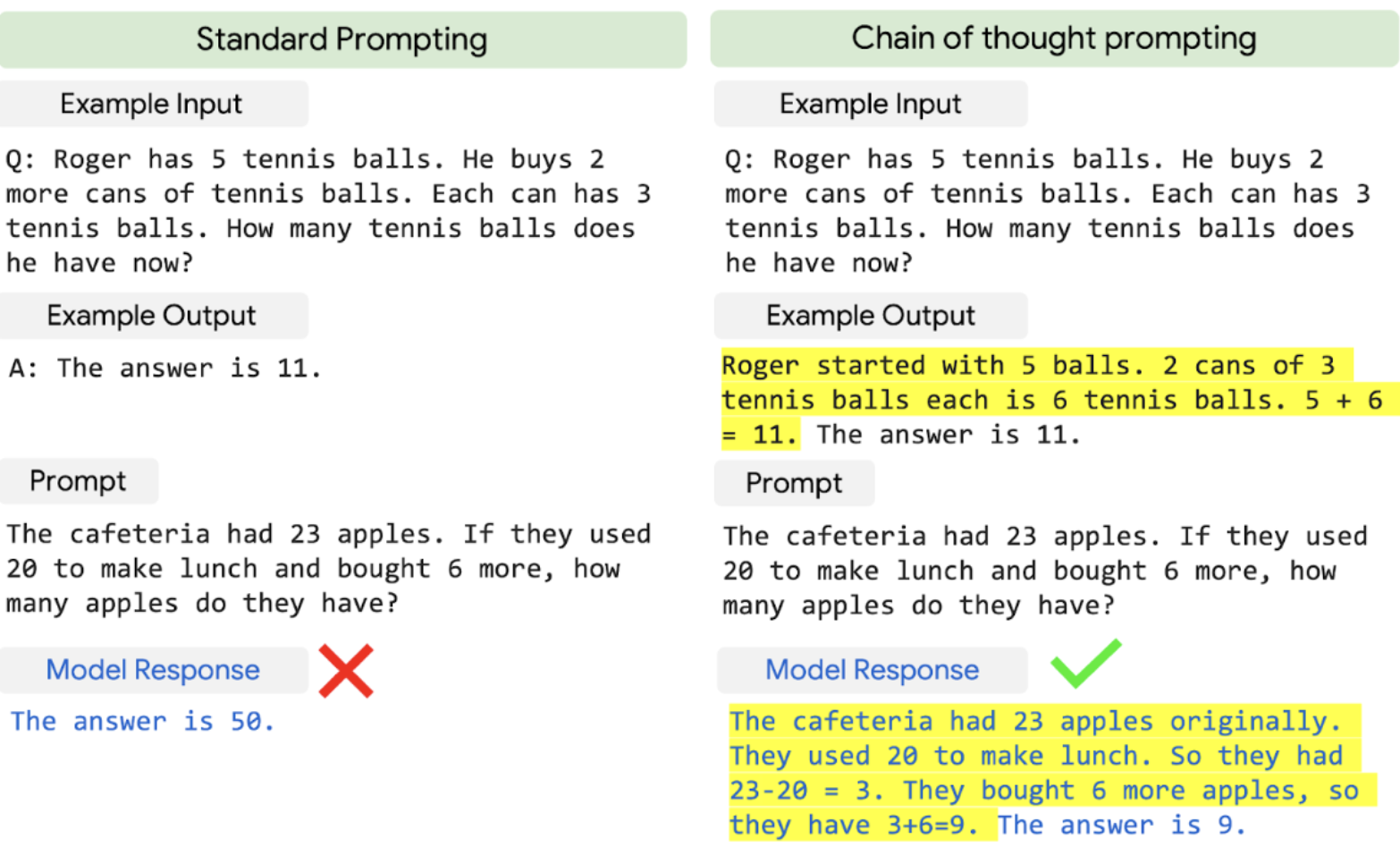
Let's close this article with Chat GPT-3, I asked him to create a closing sentence:

Finally, we have to keep in mind that these tools are not final, sometimes they can be wrong. Over time, the links to these pages may become outdated or there may be some updates. If you let me know, I will update the links in the article at the first opportunity :)


















